April 2009
Overexposure
The process of seeing is a central theme in my work as a visual artist. My interest lies in perception—how we see and how we perceive—on an individual and subjective level. My inspiration is drawn from various sources out of scientific research; I use the icons, models and knowledge of these scientific fields; it is their abstraction that interests me. To me these forms and models are pure mental works, but at the same time they reflect back at us. It points to important things in our lives, our connection with the unknown.
I take these, for example, platonic forms and scientific research out of their scientific world and change them, reorganize them, put them in another context. In the end my artwork is not about science, the works are not about nor illustrate scientific principles. I give these forms, models and research a different meaning, belonging and appearance. I want them to express a certain consciousness, a certain knowing. Knowledge determines what we see and how much we see. I am interested in the transfer of knowledge on an individual and subjective level, not through the language of science.
Light is a fundamental aspect in the process of seeing and therefore an important point of focus in my work, but it is not only this side of light that I am interested in, the manifold aspects of this phenomenon are of great interest to me. Light can be a carrier and storage area of information. Light can be a time experience. The sun itself contains already a lot of fundamental questions; what is time, where does light go. How light and its surroundings interact; how it is reflected, refracted, absorbed and the existence of colours et cetera. I want to investigate direct uses of light—natural and artificial—against the representation of light. Above all, the light of this specific place and its surroundings greatly influence this investigation.
Every week or every two weeks I want to focus on one aspect of light. As a result of this research I will reflect on the chosen aspect of light. It can be an installation, an object, photograph, intervention in space, choosing the correct medium that is needed to get the idea across. After this period of investigation the final result is one big installation, with all the findings together that are in dialogue with each other. For the end presentation this installation will be overexposed every half an hour through fierce lamps that work on a time clock.
June 2009
The proposal above changed during time. Out of this proposal two different concepts for two different works came into existence.
The first work is an installation, Borrowed Light. I created a scene with sculptures and a photograph I made beforehand, which already deal with the subject of light. In the final installation I used ‘Delft’ light at two different moments. I “borrowed” the light of this certain place at two moments, in the evening and in the early morning. The title also reflects back to physicists who prepose that we live on borrowed light. Certain qualities of the apartment are integrated in the installation as well. The photograph below shows the first step in creating the installation. The medium of photography plays an important role, as it registers light at a certain moment.
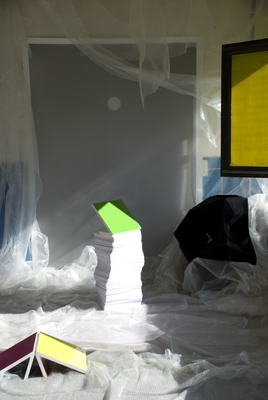
The photograph is taken at six o’clock in the afternoon, when the light of Delft falls down over the photograph of the sun. The next step was using this photograph in the final installation, which can be seen below.
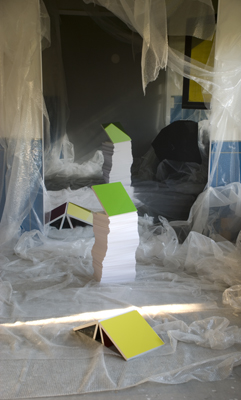


Some sculptures are mirrored, changed or taken away. Moreover, the moment the photograph is taken differs, it is taken early in the morning when the light of Delft shone in from the other side of the apartment. The possibility exists that the registration of this installation shown above will become an independent photograph. The black sculpture, present in the photograph at the installation, disappeared in the final installation and is isolated elsewhere in the apartment.
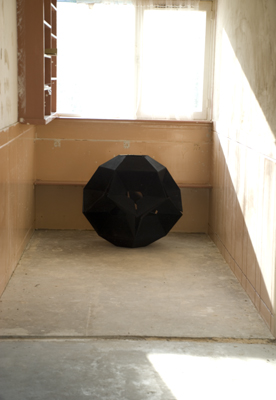
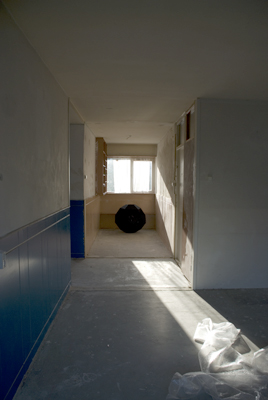
The second work deals with an other side of the subject of light, Transparency. It is that aspect of light that reflects something else- light is used in a symbolic way. I overexposed one of the apartments for a couple of hours one night. In this way my presence in Delft became visually noticeable through the use of artificial light. The photographs below show the results.
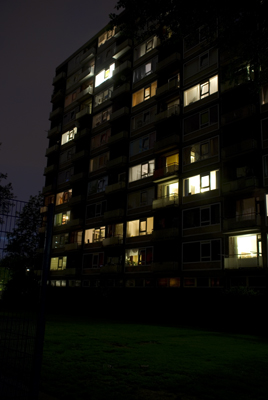
12:00 pm
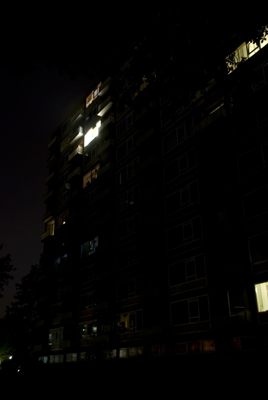
02:30 am
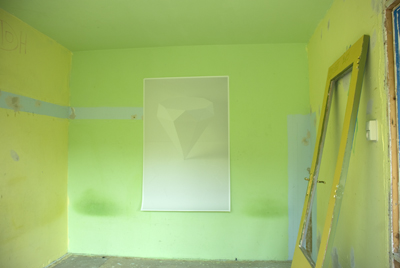
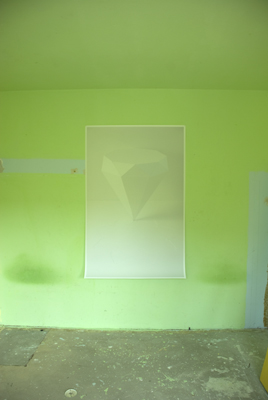

The works above deal with different sides of light, which is the focus of my work at the moment. I am interested in the diversity and complexity of this subject. Already for centuries light is investigated from many sides and in different ways. However we still do not know what light is exactly. The more this subject is investigated, the more complex it becomes. (the more questions come to light!) The fascination of certain artists, including myself, for the subject of light can partly be explained by this. The long and important role light has played and still plays in art history is an aspect in my work, its continual development as a subject and as an object. The intrinsic properties of light (e.g. absorption, reflection, refraction, color, storage area and carrier of information) also interest me. I work with these properties to create sculptures and photographs, which represents these effects. Moreover, these properties of light are directly used at a certain time and at certain places, through installations or photographs. The medium of photography is important in my work, while it registers light. Another side of light, the side where light can stand for or speak about something else (e.g. enlightened, angles, presence) is integral to my work as well. Generally speaking, I am investigating the broad spectrum of light, what it represents and what it can be.
[...] Overexposure [...]
[...] Suzanne van Rest’s installations combine sculptures and photographs that address the subject of light. In ‘Overexposed II’ one installation incorporates sculptures and photographs that capture a certain moment and quality of ‘Delft’ light. The second work consists of a photograph, taken of an ‘overexposed’ apartment. In this way van Rest makes her presence visible in Delft through the use of strong, artificial light. [...]